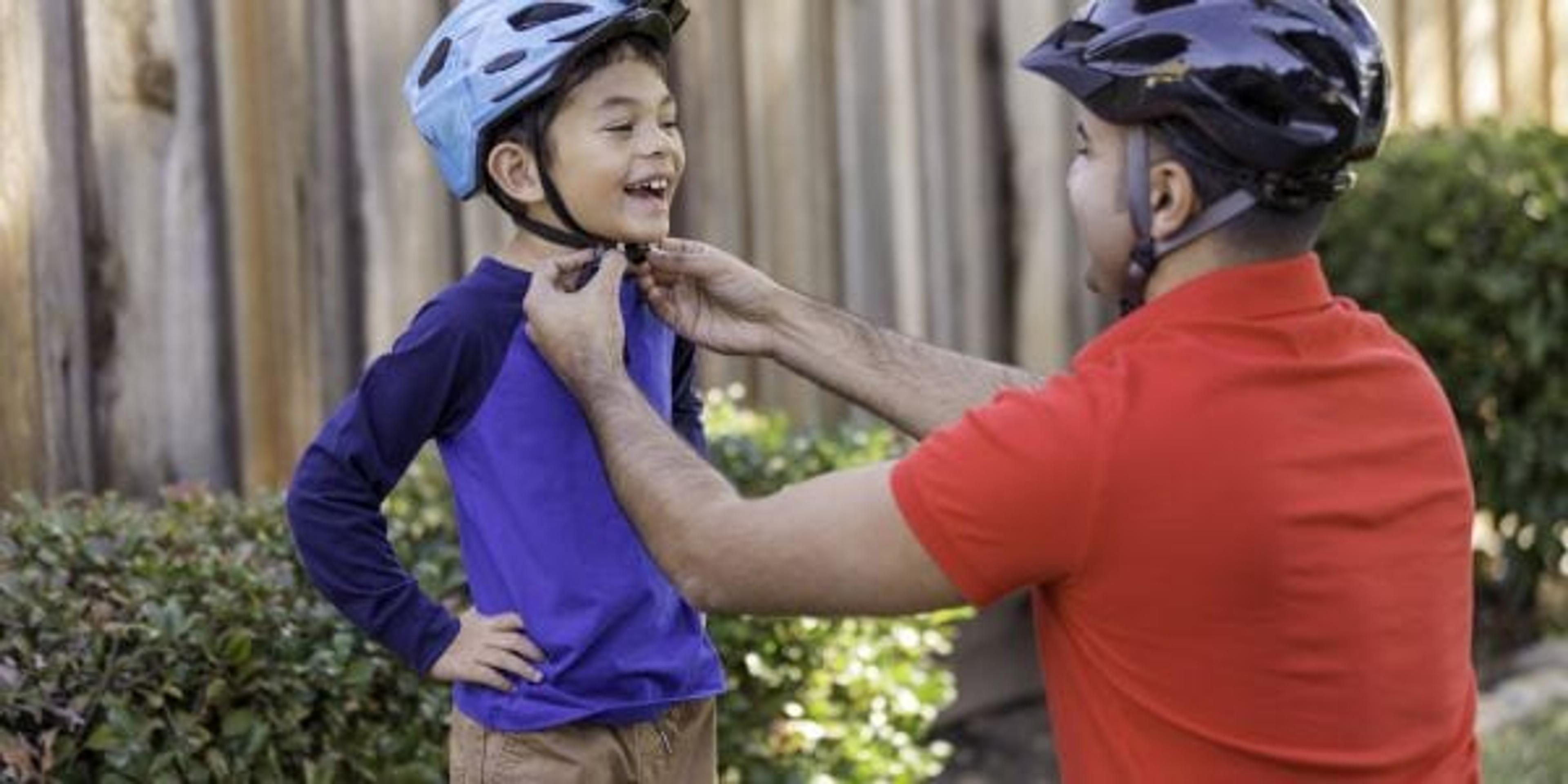How Bike Helmets Help Your Head

Jillian Berndtson
| 3 min read

Did you know that wearing a bike helmet reduces the risk of a head injury by 85 percent?
Bike helmets are extremely effective at preventing injury due to their design and the engineering behind them. Bike helmets are typically made of two parts- the hard outer shell and the softer inner lining. When the helmet hits a hard surface, the outer shell spreads the force of the impact, reducing the risk of skull fracturing. At the same time, the inner shell absorbs the energy of the impact so you feel significantly less of it.
Children should wear a helmet as soon as they start riding a tricycle and continue as they begin bicycling. Children and adults alike should never stop wearing a bicycle helmet because a collision or impact at any age can still cause a concussion or traumatic brain injury. You wouldn’t want to buy a car without air bags, just like you shouldn’t ride a bike without a helmet.
So how do you know if the helmet is the right fit?
- Measure your head to make sure the helmet is properly sized. Most helmets also come with pads to provide cushion as needed. These are especially useful for children as their heads grow. Make sure the helmet can fit squarely on your head without sliding to one side or the other. A helmet should be fitted on top of the head, covering the upper forehead. If it is not situated properly, it will not protect the most vulnerable areas of the head.
- Align the straps under the chin, keeping the buckle centered. You can use the straps in the back of the helmet to help. Then adjust the slider on the left and right sides of the helmet to form a “V” around the ears. If the helmet has the option to lock the slider, be sure to do so before getting on a bike.
- Buckle the strap under the chin. Adjust as necessary to make sure the helmet is snug and secure. You should be able to fit no more than one or two fingers between the strap and the chin.
- Test your work! If the helmet pulls down on your head when you yawn, your helmet is properly fitted.
Now that you know how to get the proper fit, when should you replace the helmet?
You should always replace a helmet after a collision. If the helmet has been cracked or chipped, it needs to be replaced. Even if there are no visible signs of damage, if the foam inside the helmet was compressed, its effectiveness is weaker.
You should also replace the helmet when the sizing no longer fits. New helmets will be more common during childhood since children’s heads are still growing.
The best way to maintain the habit of wearing a bike helmet is to get your child started early on. Explain why wearing a helmet matters. Let kids choose their own helmet design so they’re excited to wear it. If they still don’t want to wear a helmet, you can offer small incentives to wearing one. Consistency is key to creating lasting habits.
You might also like:
Photo credit: Jason Doiy





